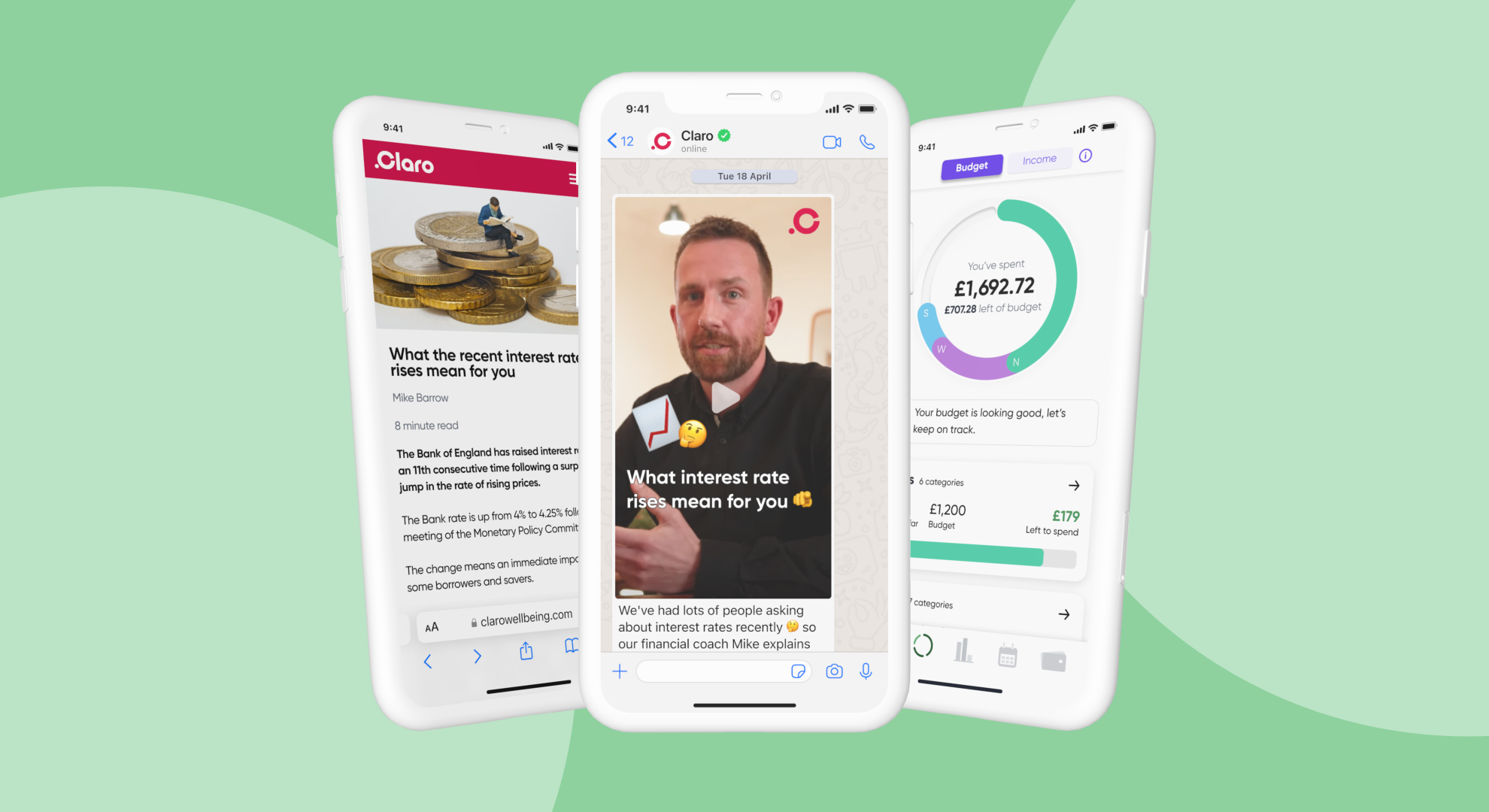6 min read
Should employers acknowledge Blue Monday?
Blue Monday (15 January) has a mixed reputation. But there’s still value in using the day to raise awareness of mental health and wellbeing...
2 min read
 Claro Wellbeing Team
07-0-2022
Claro Wellbeing Team
07-0-2022
![Should you invest with a Stocks & Shares ISA or GIA? [2022]](https://blog.clarowellbeing.com/hubfs/susan-q-yin-BiWM-utpVVc-unsplash.jpeg)
If you want to invest, you can’t just use your ordinary bank account. You need to set up an account specifically designed for investing. The two main types of investment accounts are ISAs and GIAs.
So, GIA vs ISA – which should you use for investing? Well, both have their pros and cons, which we’ll dig into here.
An ISA is an Individual Savings Account. It allows you to save or invest money in a tax-efficient way. You can contribute up to £20,000 per year (for the tax year 2022 – 2023) into ISAs and you won’t pay any capital gains or dividends.
The main types of ISA are:
Cash ISA: for saving, in cash, like the name suggests
Stocks & Shares ISA: for investing
Lifetime ISA (LISA): for buying your first home, or retirement
Innovative finance ISA: peer-to-peer lending for HMRC-approved ISA managers
You can also take out a Junior ISA (JISA) to save or invest for your child’s future.
You can split your ISA allowance across all the different types of ISA (subject to individual limits), as long as you don’t contribute more than £20,000 in total each tax year.
Some ISAs have their own maximum deposit allowances: the allowance for a Junior ISA is £9,000, and the allowance for a Lifetime ISA is £4,000.
To learn more about the different types of ISAs, read our simple guide to ISAs.
A Stocks & Shares ISA is a type of ISA used for investing in stocks and shares (as the name suggests). In this account, you can hold a range of investment assets such as shares, funds, bonds, and cash.
A GIA is a General Investment Account. It’s a simple way of investing once you’ve reached your annual ISA allowance.
Like a Stocks and Shares ISA, you can hold a range of assets in a GIA, such as shares, funds, bonds and cash.
Unlike a Stocks & Shares ISA, you will pay capital gains tax and dividends tax. You’ll pay capital gains tax on any profit you make above your annual allowance (which is £12,300 for the 2022 – 2023 tax year). You’ll pay dividends tax on any income you get above the £2,000 annual allowance.
With both the ISA and the GIA – as with all investing – the value of your investments can rise and fall. It’s best to invest with a long-term horizon (ideally a minimum of 3 years).
Deciding between an ISA or GIA? With either, you can invest in pretty much anything. Ultimately, it makes sense to use your tax-free ISA allowance before you invest using a GIA.
If you’re still not sure where you want to invest your money, why not speak to a financial coach? At Claro Wellbeing, our expert in-house coaches are trained to help you understand your financial situation and build a plan to reach your goals. They can clearly explain your options and suggest investments you might not even have considered.
If you decide to invest, remember that your capital is at risk.
Tax treatment depends on your individual circumstances and may change in the future.
Article updated 7 July 2022.

6 min read
Blue Monday (15 January) has a mixed reputation. But there’s still value in using the day to raise awareness of mental health and wellbeing...

4 min read
Ever wished you had a money-whiz friend you could ask anything, as often as you like?

7 min read
Millions are being impacted by financial stress. Yet, until now, workers in frontline occupations have not been able to benefit from educational...